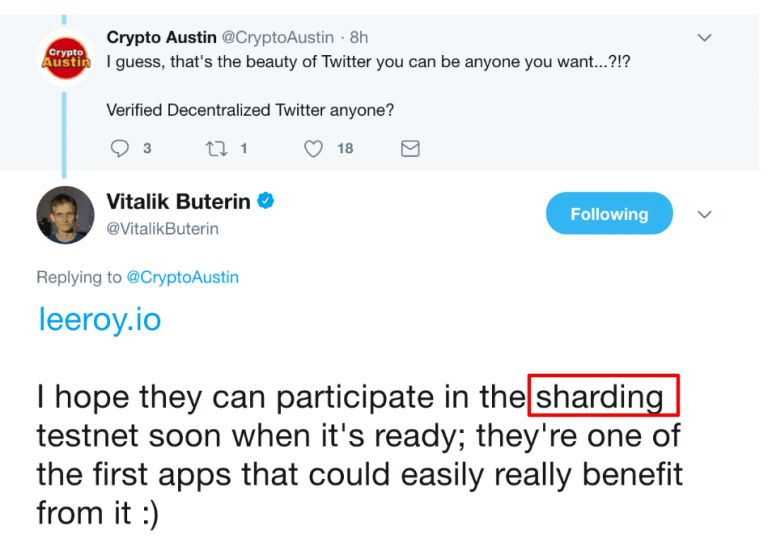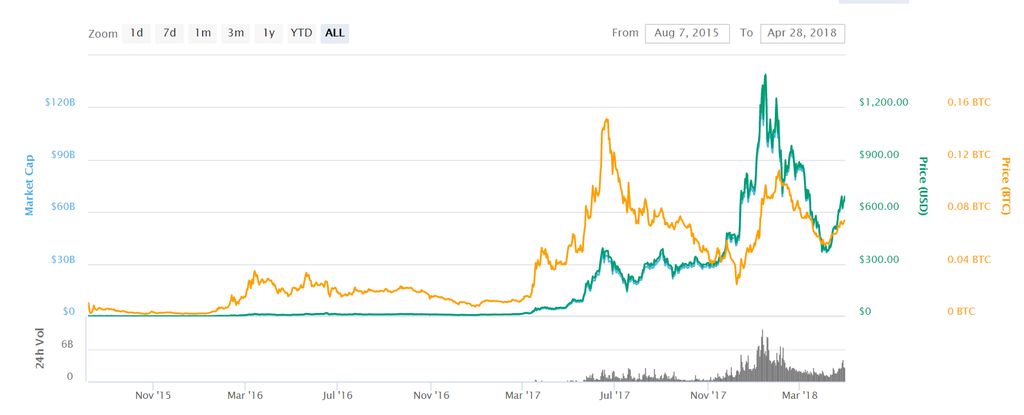Stop overpaying - start transferring money with Ogvio. Sign up, invite friends & grab Rewards now! 🎁
There is no doubt that the cryptocurrency environment has become highly competitive as various cryptocurrencies are trying for the same spot. One such cryptocurrency pair which is often seen competing against each other is — NEO VS Ethereum.
While Ethereum is the second most popular cryptocurrency after Bitcoin, NEO has been growing very quickly and making a good attempt at catching up with Ethereum. Their competition is so intense that NEO is often referred to as the “Chinese Ethereum”.
Perhaps you’re wondering, "what are the differences between Ethereum and NEO blockchain? Why is NEO being called the next Ethereum?". Well, rest assured — you’ll find the answers in this guide.
By the end, you will understand the key features of NEO and Ethereum (among many other things), and how they differ from each other. Note that if you're looking at where to get yourself some NEO or Ether, you should check the top-rated cryptocurrency exchanges out there, such as Binance, Coinbase, and Kraken.
So, let’s get started!

Did you know?
Subscribe - We publish new crypto explainer videos every week!
How Can You Earn Money With Axie Infinity? (AXS Animated Explainer)


Table of Contents
- 1. NEO VS Ethereum: The Basics
- 1.1. NEO VS Ethereum: Key Differences
- 2. NEO VS Ethereum: The Teams
- 2.1. Ethereum
- 2.2. NEO
- 3. NEO VS Ethereum: Scalability
- 3.1. So, What is a Consensus Mechanism?
- 4. NEO VS Ethereum: The Story So Far
- 4.1. Ethereum’s History
- 4.2. NEO’s History
- 4.3. Ethereum’s Price Trends
- 4.4. NEO Price Trends
- 5. Final Words
NEO VS Ethereum: The Basics
Before jumping into the key differences between NEO and Ethereum, you should probably know why they are said to be competing with one another!
Latest Deal Active Right Now:The whole reason for the NEO VS Ethereum debate is because both projects are similar in what they primarily offer. Unlike Bitcoin which is just a digital currency, both NEO and Ethereum serve much more than just a single purpose.
The Ethereum and NEO blockchains provide platforms specifically designed for the development of distributed applications (DApps) and smart contracts. As well as being used for DApps, the smart contracts are often put to use for ICOs.
Don’t worry if you are not familiar with these terms — I will quickly explain them here.
- dApps and Smart Contracts
A dApp is essentially an application that runs on the blockchain, therefore making it distributed and decentralized. Rather than create their own blockchain, developers can build an application on top of an existing blockchain, like NEO or Ethereum.
Smart contracts are the mechanism behind DApps. They are self-executing contracts in which the terms of an agreement between are directly written into lines of codes. As it is in code rather than on a piece of paper, there is no third party required to execute the contract! This means there is no central authority to trust or rely on.
- Initial Coin Offering (ICO)
ICOs have become the most popular way for new cryptocurrencies to raise initial funding for their projects. Ethereum and NEO both provide a platform for new coins to launch their ICOs.
ICOs worth about $10 billion has already been launched in 2017 and 2018 combined.
To learn more about ICOs, see my What is an ICO? guide.
DApps, smart contracts, and ICOs are considered as the next big thing for cryptocurrencies and that is why many cryptocurrencies are fighting to grab a share of this market. Ethereum and NEO are the market leaders in this space and also the biggest rivals.
So, now you know about the basics of the NEO VS Ethereum war, let’s go on to see how they are different from each other.
NEO VS Ethereum: Key Differences
While Ethereum and NEO are both trying to serve the same market, they differ from each other in many factors. Let’s compare them on some of the fundamental factors.
- Adoption by developers
NEO has found instant support among the developer community because it supports programming in multiple languages like C++, C#, Go, Java. So, anyone with knowledge of one of these languages can start building projects on the NEO blockchain. Now let's see Ethereum in the Neo VS Ethereum adoption.
Ethereum, on the other hand, allows coding only in one language — Solidity. Moreover, Solidity is a new language (it was designed by the Ethereum founders exclusively for Ethereum), so there are very few people who know it. So, anyone who wants to build DApps or smart contracts needs to learn this language first.
- Transaction Speed
NEO can handle about 10,000 transactions per second, whereas the Ethereum blockchain currently supports around 15 transactions per second.
As you can clearly see, there is a huge gap in the transaction speed. At a time when both Bitcoin and Ethereum are struggling to increase their speed, NEO provides a great alternative.
- Blockchain fuel
The NEO blockchain has two different coins — NEO and GAS. Whereas NEO VS Ethereum, Ethereum gas the same 'gas'. Let's look at it. Anyone who holds NEO in their wallet gets rewarded in the form of GAS. You can think of NEO as the stocks of a company and GAS as the dividend.
Users can then use this GAS to pay for the transactions on the NEO blockchain.
Ethereum’s native currency is called Ether and smaller units of Ether are called “gas”. You can think of Ether as the dollar and gas as the cents.
To clarify: NEO and GAS are two distinct tokens, whereas Ether and gas are the same, ‘gas’ on Ethereum is just smaller units of Ether, as I mentioned above.
- Divisibility
Ethereum (Ether) is divisible into smaller units (gas) but NEO is indivisible. Yes, that’s right! NEO is one of the very few currencies which cannot be divided, just like the stocks of a company.
So, you cannot transfer 10.5 NEO or 1.2 NEO as it only exists in whole numbers. And that’s the reason that it needs another token, GAS, which is divisible.
- Government support
China is known for creating its own alternatives of the popular western service like Alibaba against Amazon, WeChat against WhatsApp, Baidu against Google and so on.
Similarly, NEO is being looked at as China’s answer to Ethereum. NEO is the first and biggest Chinese cryptocurrency and is allegedly supported by the Chinese government.
Ethereum, on the other hand, isn’t supported by the Chinese government. NEO has a great opportunity of capturing the massive Chinese market and other Asian markets.
So, these are the main points of differentiation between Ethereum and NEO. Looking at the advantages offered by NEO, it is clear why it is being referred to as the next Ethereum.
Another important factor which is very important for any cryptocurrency is the people behind them. Let’s have a look at team NEO VS team Ethereum.
NEO VS Ethereum: The Teams
As far as the team is concerned, I would say that both NEO and Ethereum have great teams backing them.
Ethereum
Everyone now knows the brain behind Ethereum — Vitalik Buterin.
He is a Russian-Canadian programmer who is just 24 years old. He became interested in Bitcoin at a very early age and co-founded Bitcoin Magazine.
He, along with other co-founders, went on to develop and launch Ethereum in 2015. Since then, he has been one of the leading voices in the cryptocurrency and blockchain community.
Vitalik Buterin and the rest of the team have played a major role in taking the technology of Bitcoin to the next level. They are still continuously innovating to overcome the technological challenges that Ethereum currently faces.
Some of the original members of the Ethereum team that co-founded it have gone on to found other projects of their own. This includes Charles Hoskinson, who founded Cardano.
NEO
Time to move to NEO and see who has the better team in the NEO VS Ethereum battle. Da Hongfei, the founder of NEO, also has a long-standing history in the blockchain. He founded AntShares in February 2014 to create a platform for building decentralized apps.
Are you wondering what AntShares is? Well, that’s what NEO was originally called. AntShares got rebranded to NEO only in 2017.
In 2014, Da Hongfei and Antshares CTO Erik Zhang also founded Onchain, a blockchain R&D company. AntShares (now NEO) was also developed in the purview of Onchain.
So, as you can see, NEO has a strong foundation too. The founding team has been a part of the blockchain and cryptocurrency ecosystem since the very beginning. That’s the reason they have been able to develop great partnerships and a working product.
Now you can see that NEO and Ethereum are backed by equally competent teams. The only major difference is that Ethereum has a bigger community of developers supporting its development as compared to NEO.
NEO VS Ethereum: Scalability
Most of you would know that the technology at the core of cryptocurrencies is blockchain. As expected, cryptocurrencies with more robust and scalable blockchains, are technically superior. There is one very important aspect of the Ethereum and NEO blockchains that we need to compare — The Consensus Mechanism.
So, What is a Consensus Mechanism?
Since blockchain is a decentralized, peer-to-peer network, there is no one leader who can take important decisions. So, how are the decisions made? How do you decide whether a cryptocurrency transaction is valid or not?
That’s where the consensus mechanism comes in. Any transaction on a blockchain is confirmed when the network participants come to the consensus (group agreement) that it is a valid transaction.
It is not as straightforward as it sounds, but let me explain…
The network participants (called “nodes”) have to run complex functions on their computers to be able to solve a problem and then convince the rest of the network that their solution is correct. This method of decision-making is known as a consensus mechanism.
Following are the important factors in the NEO VS Ethereum battle that depend on the efficiency of the consensus mechanism:
- Transaction speed
- Network scalability (which is essentially the number of transactions it can complete in a second)
- Transaction fee
There are several popular mechanisms and cryptocurrencies can be differentiated based on the type of consensus mechanism they use.
NEO uses a delegated Byzantine Fault Tolerant (dBFT) consensus mechanism. This is an improved version of the Proof-of-Stake (PoS) mechanism. Ethereum, on the other hand, uses a Proof-of-Work (PoW) mechanism.
So, if we were to say put them in the increasing order of improvement, then it might look something like PoW, PoS, and dBFT. As you can see, NEO is already far ahead of Ethereum in terms of the consensus mechanism.
In the NEO VS Ethereum battle, dBFT makes it possible for NEO to be more scalable than Ethereum. Ethereum is still using a very expensive and inefficient consensus mechanism (PoW). This definitely gives NEO an edge.
The good news (for Ethereum supporters) is that Ethereum is in the process of upgrading their consensus mechanism to PoS, which is much more efficient than PoW.
Vitalik has also indicated that they may be implementing another solution, called Sharding, for further scalability. So, what will sharding do?
In PoW, all network participants are required to validate each transaction. While in sharding, only a small subset of network participants will carry out the validation of each transaction.
So, a higher number of transactions will get validated simultaneously by different subsets, therefore improving the scalability. This would make things a lot brighter for the future of Ethereum.

As far as scalability and consensus mechanisms are concerned, NEO is winning the game so far, but Ethereum is catching up with it. What remains to be seen is how fast Ethereum can bring about these changes.
Now that you know most of the key points of this NEO VS Ethereum debate, I will take you through their journey so far.
NEO VS Ethereum: The Story So Far

Did you know?
Subscribe - We publish new crypto explainer videos every week!
How to Learn Crypto The Easy Way? (Trending Beginners' Strategy)


Ethereum’s History
Let's go through NEO VS Ethereum histories to see who is the leader. Ethereum was launched in 2015, with the purpose of improving upon the limitations of Bitcoin. Vitalik Buterin, also the co-founder of Bitcoin Magazine, has tried to convince the Bitcoin community regarding the upgrade that Bitcoin’s technology needs.
When the community couldn’t come to an agreement, Vitalik Buterin decided to co-create Ethereum along with Mihai Alisie, Anthony Di Iorio, and Charles Hoskinson. While the development of the project began in 2014, the platform itself was launched in July 2015.
In 2016, a decentralized autonomous organization (DAO) was created in order to raise funds for the Ethereum project. The good part was that they successfully raised a record $150 million. Unfortunately, an anonymous person exploited a fault in DAO’s code and stole $50 million.
This attack stirred a debate in the Ethereum community and eventually led to Ethereum being split into two currencies: Ethereum (ETH) and Ethereum Classic (ETC).
NEO’s History
NEO was launched in 2014 as AntShares by Da Hongfei and Erik Zhang through their development company, ‘Onchain’.
While developing AntShares, Onchain partnered with Microsoft China and Fadada in June 2016. All three companies together formed Legal China with the intention of solving several deficiencies of legal digital applications.
In June 2017, AntShares was rebranded as NEO. In March 2018, Onchain distributed 1 ontology (ONT) token for every 5 NEO held in a user's wallet. Using ONT, investors can vote on system upgrades and other governance issues on the NEO platform.
So, that’s a brief history of Ethereum and NEO. I will now take you through the historical price trends of both cryptocurrencies.
Ethereum’s Price Trends
Ethereum is the second most valuable cryptocurrency, with a market capitalization of $68.17 billion. Being the first cryptocurrency to offer a platform for smart contracts development, Ethereum got huge support from investors and developers.
As you can see in the snapshot below, the price of Ethereum grew from $9 in January 2017 to $1,389 in January 2018. That’s a 17,000% return in just a year! Now let's see what the competition has to offer in the NEO VS Ethereum battle.


- Secure and reliable
- Accepts fiat currencies
- Lots of trading options
- Reputable exchange
- Accepts fiat currencies
- Offers various trading options

- Huge trading variety
- Regulation-compliant around the globe
- Fair trading fees
- Beginner-friendly
- A wide array of features
- Vast number of different crypto coins & tokens

- Beginner-friendly
- Secure
- Decent trading and withdrawal fees
- Crypto.com Visa Card
- Automated tools & bots
- Ecosystem synergy with CRO
NEO Price Trends
If you are thinking that it is too difficult to beat the returns given by Ethereum then you are wrong. Riding on the support of the Chinese government and good technology, NEO has performed extremely well.
It grew from about $0.16 in January 2017 to about $162 in January 2018. That’s a growth of about 111,400%. Mind-blowing, right?
NEO’s current market cap stands at $4.96 billion.
Ethereum is the clear winner when it comes to popularity. It has a huge following of investors, developers and enthusiasts. It is also the most adopted. That said, Ethereum needs to improve on various aspects that NEO is better in, including scalability.

Final Words
So, you now know the ins and outs of the NEO VS Ethereum comparison.
You know that NEO is being considered the next Ethereum because of the advantages it offers over Ethereum in terms of technology.
You also know that Ethereum has the upper hand in terms of adoption and popularity. Not only that, but the Ethereum team are currently working on solutions to improve their technology to match or beat NEO’s technology.
Undoubtedly, NEO VS Ethereum is a tough debate and it is difficult to say who is the winner. These are extremely early days, and we still have a lot to see — only time will tell.
What do you think? It’s NEO VS Ethereum; which do you prefer? Is it NEO, or do you think we're set for an Ethereum future? I’d love to hear your thoughts! Also, don't forget - if you're looking to get yourself some Ether or NEO coins, check out Binance, Coinbase, or Kraken, or any other top-rated exchange out there!
The content published on this website is not aimed to give any kind of financial, investment, trading, or any other form of advice. BitDegree.org does not endorse or suggest you to buy, sell or hold any kind of cryptocurrency. Before making financial investment decisions, do consult your financial advisor.









